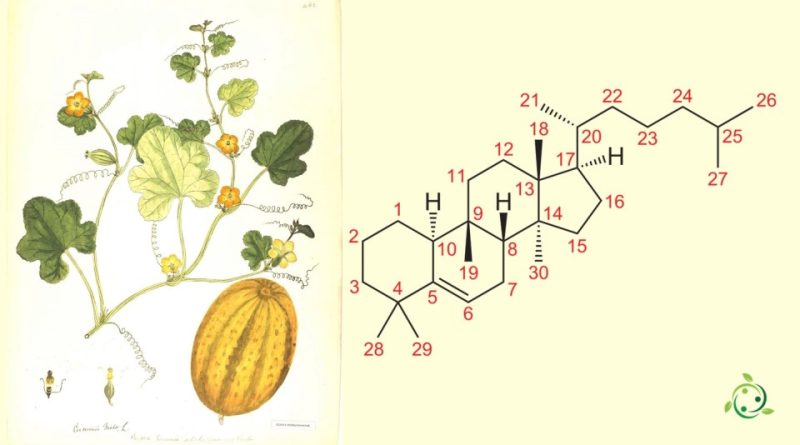Cucurbitacin
Cucurbitacin
Cucurbitacins are a class of bitter, toxic chemical compounds found in several plants in the Cucurbitaceae family, which includes pumpkins, cucumbers, watermelons, and melons, among others.
From a chemical point of view they are tetracyclic triterpene glucosides, natural compounds used as medicines in many countries such as China and India.
These chemicals are naturally present in these plants and may be responsible for their bitter and unpleasant taste. Cucurbitacin is often produced as a defense by plants against insects and other predators.
It is important to note that ingesting cucurbitacin in significant quantities can be toxic to humans and animals. Symptoms of cucurbitacin poisoning may include nausea, vomiting, diarrhea, abdominal cramps, and other gastrointestinal upset. In severe cases, ingesting cucurbitacin can lead to more serious problems.
Various plants in the Cucurbitaceae family can contain varying amounts of cucurbitacin, and domesticated varieties of these plants have been bred to reduce cucurbitacin levels, making their edible parts safe for human consumption. However, it is important to be aware of the risk of cucurbitacin in some wild or improperly grown plants.
The following molecules are known and distinguished:
– Cucurbitacin;
– Cucurbitacin A;
– Cucurbitacin B;
– Cucurbitacin D (isolated from the fruit of Ecballium elaterium (L.);
– Cucurbitacin E;
– Cucurbitacin J;
– Cucurbitacin L;
– Cucurbitacin F;
– Cucurbitacin M;
– Cucurbitacin S.
Properties and uses –
Some of the cucurbitacins have demonstrated important properties, in particular anti-inflammatory and analgesic but also cytotoxic effects.
These substances also have the property of inhibiting the synthesis of DNA, RNA and proteins in HeLa cells, the proliferation of HeLa cells, endothelial cells and T lymphocytes. Furthermore, some cucurbitacins have been shown to suppress skin carcinogenesis, to inhibit cell adhesion and disrupt the cytoskeleton in prostate cancer cells.
Warning: The information provided is not medical advice and may not be accurate. The contents are for illustrative purposes only and do not replace medical advice.

